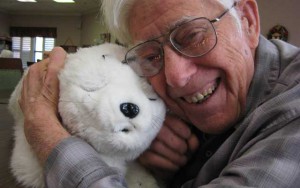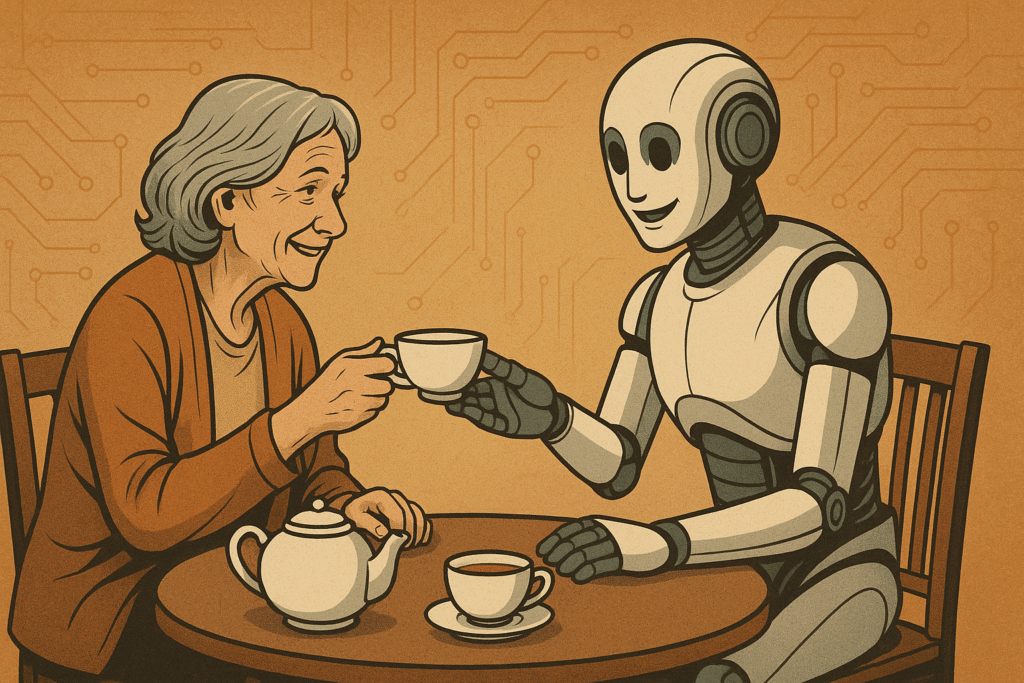“Beware, for I am fearless and therefore powerful.”
– Mary Shelley, Frankenstein Tweet
We like to think that our technological innovations are fully intentional. That they evolve to improve our lives, to make them easier. But sometimes, our technologies quietly start to reshape us in the process. Every day, you watch this phenomenon play out as our society has become more dependent on uninterrupted access to cell phones and the internet in business and social situations.
More than 200 years ago, Mary Shelley’s Frankenstein warned us not about monsters, but about abandonment, about creating life, or intelligence, or automation, and then stepping away from our responsibility to nurture it. The sin in her novel wasn’t creation; it was indifference. Today, we’re doing something Shelley could never have imagined: building machines designed to understand, respond, and even comfort us.
They live in nursing homes, in hospitals, and soon, in our own living rooms. They listen, learn, and gently say, “You sound sad today. Would you like to talk?”
The age of mechanical empathy has arrived.
When the Machine Cares Back

Have you heard of PARO the seal? It’s a therapeutic baby harp seal robot, built to appear cute to humans and to have a calming effect on and elicit emotional responses in patients of hospitals and nursing homes. It’s like animal-assisted therapy, except using robots. Across Japan and Europe, eldercare robots like Paro the seal, Pepper, and Ryan the companion are helping older adults manage loneliness and routine care. These robots can recognize tone, facial expressions, and patterns of mood. In some cases, they even encourage conversation or laughter, a remarkable fusion of engineering and emotional intelligence.
Studies show that when these systems are designed with warmth and responsiveness, users often feel calmer and less isolated.
They can ease the load on caregivers and give families peace of mind.
But there’s a quiet danger hidden in the convenience: the atrophy of empathy.
When we delegate listening, comforting, and paying attention to a machine, we risk losing the very skills that made those actions meaningful in the first place. It’s not that the robots are cold — it’s that we might be.
Creation Without Compassion
In Shelley’s story, Victor Frankenstein creates a life but cannot bear to face it. He runs from his creation -horrified not by what he made, but by what it reflected back. That’s not so different from how we sometimes treat our own innovations. We design brilliant systems but rarely stop to ask how they’ll reshape our humanity.
Eldercare automation is not the villain here. The problem is abandonment by delegation, when we hand off the relational work of caring because it’s faster, cleaner, or less uncomfortable. It’s when we say, “The robot’s got it,” and move on.
In Shelley’s world, creation without compassion led to tragedy. In ours, it might simply lead to numbness.

Keeping Humanity in the Loop
The good news? There’s a path forward and it’s not about rejecting technology. It’s about designing for empathy preservation and letting each member of the care “team,” humans and robots, play the part that suits them best.
- Hybrid caregiving systems: Let robots handle reminders, vitals, and environmental adjustments, but reserve human time for conversation, comfort, and connection. Automation should amplify compassion, not replace it.
- Human-only moments: In care facilities, schedule intentional “no-robot” times. These are programmed moments for people to simply be together, unmonitored, unoptimized, unmeasured.
- Empathy hygiene: Empathy is like a muscle; it strengthens with practice. Simple acts like listening without multitasking, making eye contact, or recalling shared stories are small workouts that keep compassion flexible.
- Design that prompts connection: The most promising robot models don’t talk for us; they encourage us to talk to each other. They function as facilitators of relationships, not replacements for it.
The Real Experiment
Maybe Shelley wasn’t writing about monsters at all. Maybe she was writing about maintenance, the moral maintenance of what we create. Every new technology carries both a capability and a question.
In this case, the question is simple: When the machine learns to care, do we stop?
The answer, I think, is equally simple: not if we remember that empathy, like electricity, flows best through a connected circuit, one that starts and ends with us.
And Here’s How:
- Leaders: When automating human roles, always ask what new space it creates for human work, and measure that outcome.
- Caregivers: Use the robot’s help as a cue to reconnect, not a reason to disengage.
- Designers: Build for invitation, not imitation. Let the machine open doors for people to walk through together.
Because the goal of progress should not be only to make us more efficient. It should also help us be more human.


